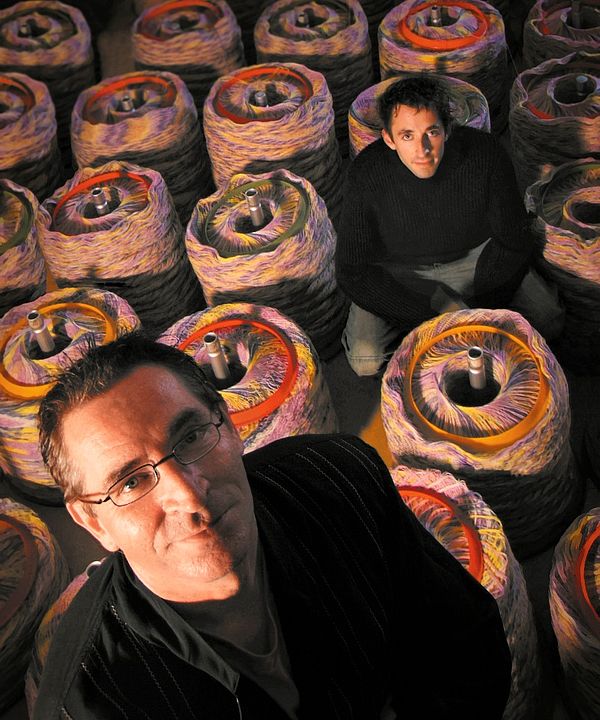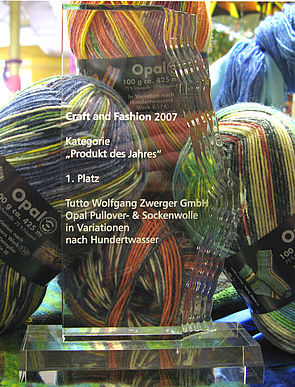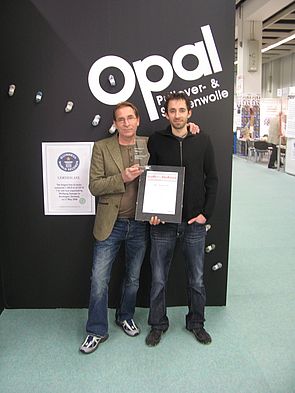
They always ask me: Mr. Hundertwasser, why are you wearing two different socks?
My typical answer: Why are you wearing two identical socks?
It is with utmost importance, that the second skin recovers. I have been practicing that for a long time. My painting, my thoughts, my style and also the architecture around me should come together and form a unit as one. From 1949 I designed clothes for myself, also shoes and socks. For example, I was the one who wore two different socks for twenty years. It was at first unconsciously, then consciously.
The fact that clothing has to be symmetrical is also one of the failures of our typified society. The clothes were never quite symmetrical. Even the clothes of the three musketeers, that means clothing up to the middle age until the 16th, 17th century was asymmetrical. You can see it especially in the middle age, when trousers had a red leg on the right, as you can see it in the painting of Paolo Uccello “La Battaglia di San Romano”. Trousers were unsymmetrical like the rest of the clothes; hats were unsymmetrical, just like the feathers, as they are still worn today. Hats are still unsymmetrical today. The Gamsbart is obliquely at the back and not exactly in the front or back or right or left at the same time. Symmetry has damaged fashion.
Friedensreich Hundertwasser
The Idea:
At the age of 21, the cosmopolitan artist defended himself against a general fashion dictation. From 1949 on he always tried to escape this imposed dictation, especially by an individual design of his clothes, his second skin, as he called it. Because of this, Hundertwasser designed his own clothes over decades. This way, unmistakable creations were formed. Later they called them “creative clothing”.
Frederic Zwerger was together with his father, Wolfgang Zwerger (1954 – 2013), the initiator of this new sock art. Frederic Zwerger himself is a great admirer of Friedensreich Hundertwasser, that’s why he designed this collection in 2006. Those new stunning colors and fresh patterns should not only underpin the fun of knitting and crochet as a relaxing and meaningful leisure activity, it should also encourage to show off a little more individuality and extravagance, as definded by the artist who died in 2000.
With the balls of this unique collection, you are able to knit patterns which are in color and form modeled on eight masterpieces of Hundertwasser. In the meantime, there are three special collections Opal in variation according to Hunderwasser, each with eight colors.
Craft & Fashion Award 2007
In April 2007, Frederic Zwerger was awarded the first place at the Craft & Fashion Award with the first special collection of this colorful knitting yarn in variation according to Friedensreich Hundertwasser. The prize was awarded by the organizer of "handarbeit & hobby". This is also a posthumous tribute to the already deceased Hundertwasser, who also entered new artistic territory with his colorful works.
From gaudy to darkly coloured - these 24 colours leave nothing to be desired. We are very pleased that these three collections in variation according to Hundertwasser have been able to inspire for years.



